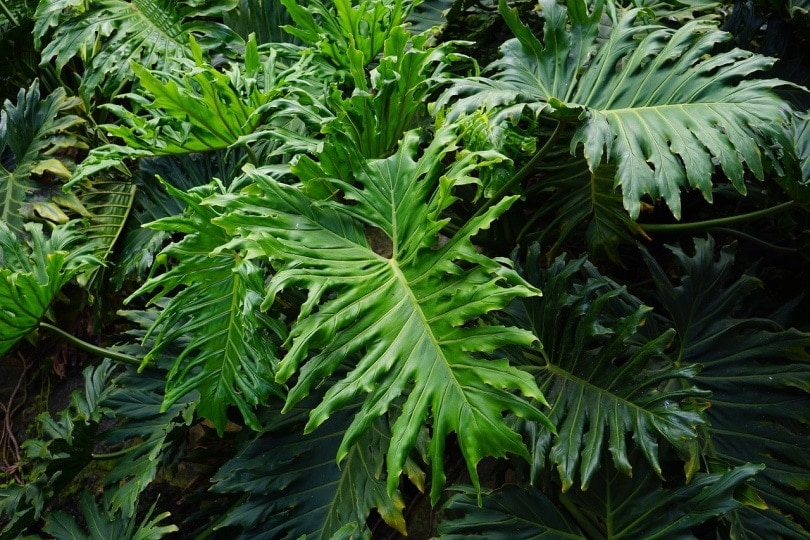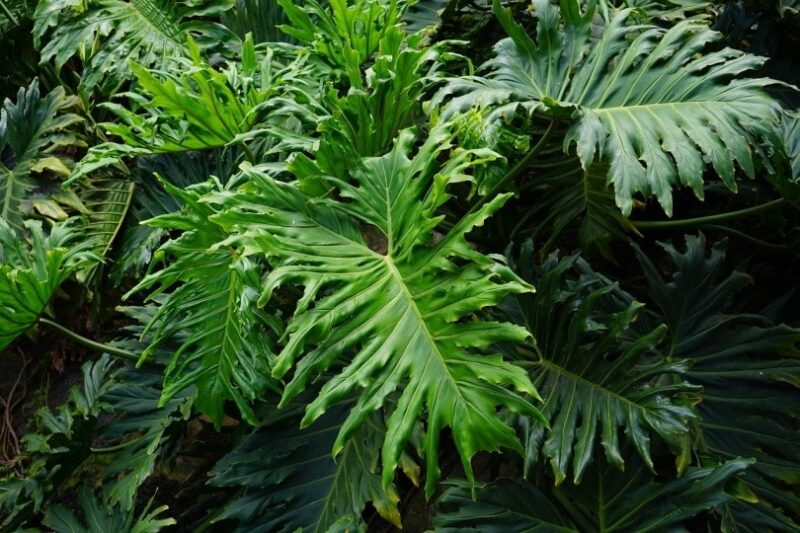As a cat parent, you want to do everything to keep your beloved feline safe and healthy. And, like many other people with cats, you might also enjoy keeping a few houseplants around to brighten up your home or apartment. It’s essential to make sure every plant you keep is safe for your cats. Unfortunately, while many philodendrons look beautiful, they are toxic to cats.
The philodendron family contains several varieties, such as heartleaf philodendrons and fiddle-leaf philodendrons. The monstera variety is also dangerous to felines. There are hundreds of philodendrons, and many do well as houseplants. However, they are considered moderately toxic for cats and dogs.
What Health Problems Do Philodendron Plants Cause?
Philodendrons contain insoluble calcium oxalates. They are small sharp crystals that are released inside the cat’s stomach, intestines, and mouth if the plant is eaten. While the cat will be okay if it never tries to consume the plant, it’s not worth the risk of having it at home. Exposure to the plant can also irritate your cat’s eyes and very rarely cause problems breathing.
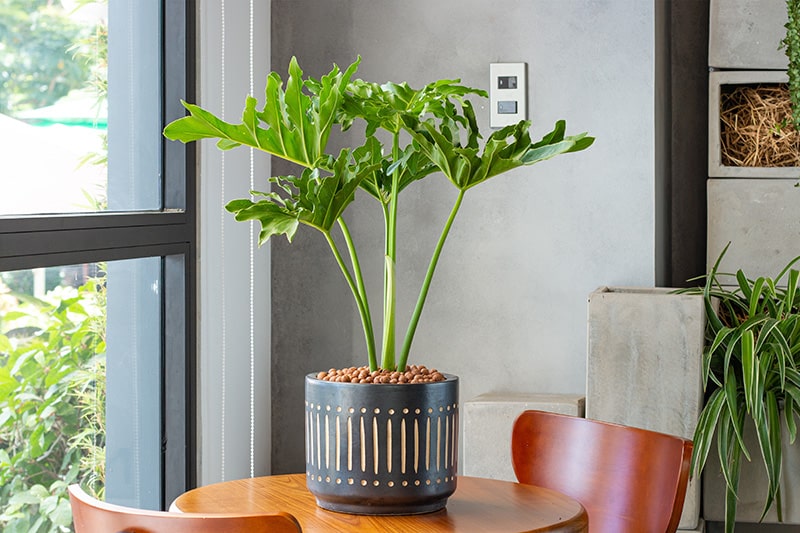
If you already have a philodendron in your house, be aware of the common signs of philodendron toxicity:
- Oral irritation
- Swelling of the mouth, lips, and tongue
- Excess drooling
- Problems swallowing
- Trouble breathing
- Vomiting and diarrhea
If you see your cat touching or eating your philodendron plant, remove the cat right away. You can gently wash its face to remove irritants from the plant. Signs can be mild to severe. Monitor your cat for severe side effects and reach out to a vet for advice.
Six Plants That Are Toxic to Cats
If you have cats, it’s best to avoid philodendron plants, but other house plants also pose health risks for your feline best friend. Here are six more species:
1. Easter Lilies
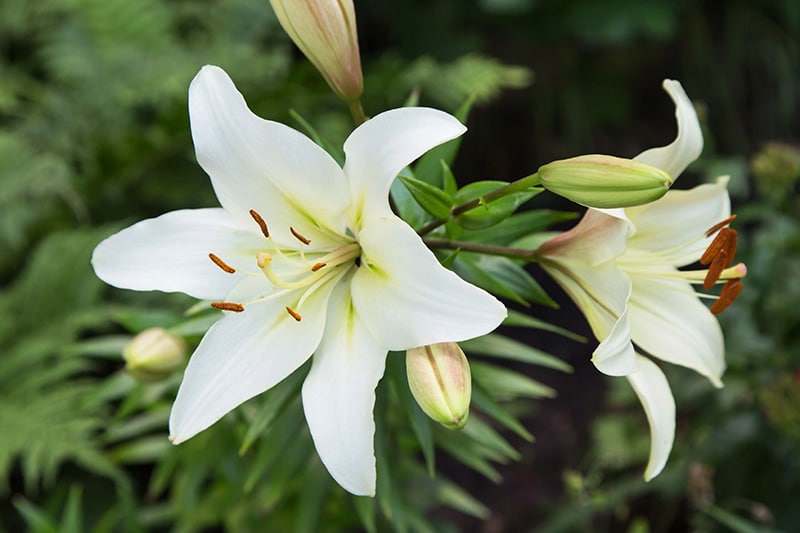
As the name suggests, this plant is frequently gifted on Easter. But, while it has beautiful flowers, it is well-known for causing health issues in cats. Unfortunately, symptoms include vomiting, diarrhea, and loss of appetite, but they can worsen. Easter lilies can cause kidney damage, organ failure, and even death. Overall, it’s best to keep all lily varieties away from your pets, as most are quite toxic.
2. Ivy
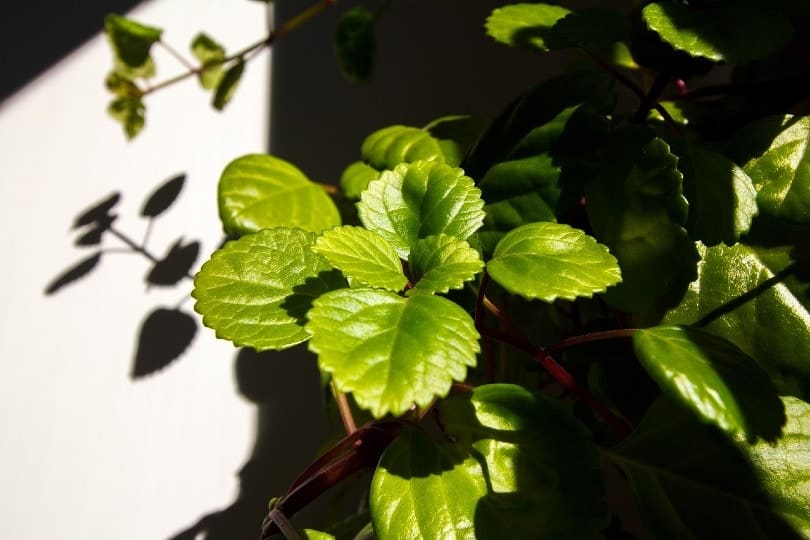
Ivy is another popular house plant because of the unique shape of the leaves and the desirable trailing vines. Most English ivy varieties are poisonous and dangerous for cats because they have a toxic component called triterpenoid saponins. If ingested, ivy may cause vomiting, abdominal pain, and diarrhea.
3. Pothos
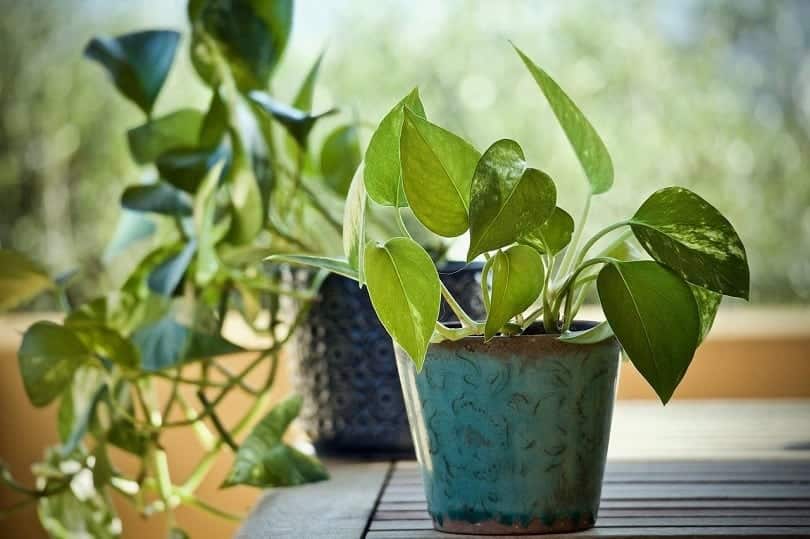
While pothos is one of the most well-known house plants, it’s one you should keep away from your cats and dogs. Just like philodendrons, pothos plants contain insoluble calcium oxalates, so the signs are similar if the plant is ingested. Your cat could wind up with side effects like drooling, vomiting, and difficulty swallowing. So, while you might love seeing the trailing tropical-looking plants around, make sure you keep your cat safe.
4. Cannabis
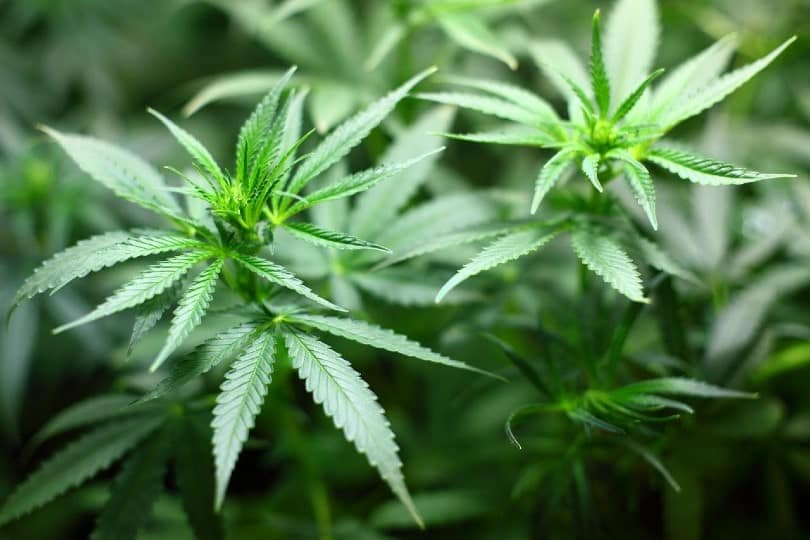
Cannabis is legal in several regions of the United States, but that doesn’t mean it’s safe for your cat. Your pets can experience issues if they inhale second-hand smoke, eat an edible, or consume cannabis by itself. Because many pet owners have these products, your cat could accidentally consume them. Signs of cannabis intoxication in cats include changes in heart rate, breathing rate, and blood pressure. While most pets will recover, you should check with a vet to be safe.
5. Sago palm
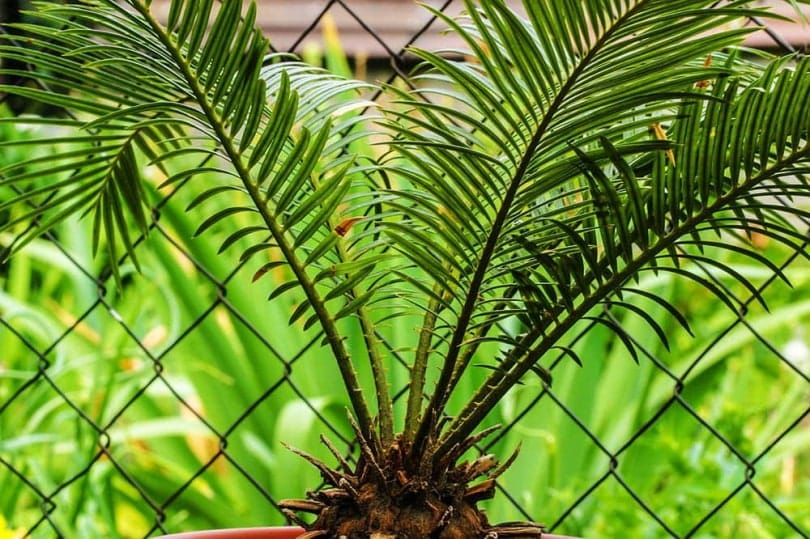
This plant has lovely fronds, but it’s not so pleasant when it causes health issues for your cat. All elements of this plant are toxic to pets, and the seeds are particularly dangerous. The plant contains cycasin, and this compound can cause liver damage. Some common signs of sago palm poisoning include dark stool, lack of energy, increased thirst, vomiting, and diarrhea. This plant can be deadly to cats, so get veterinary help right away if your cat ingests any part of the plant.
6. Aloe Vera
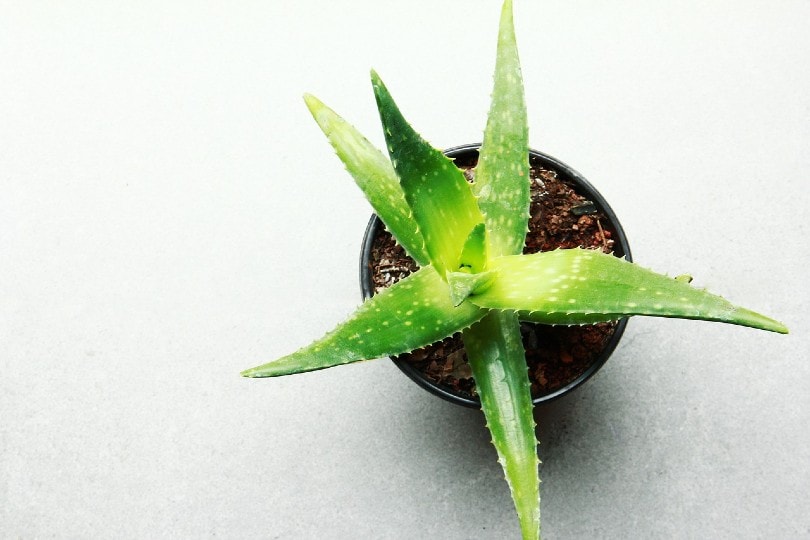
Aloe vera is a common indoor and outdoor plant because it looks nice and provides some health benefits. But, while the gel substance in the plant can help sunburned humans, the plant is toxic to cats. The plant’s gel is safe for pets, but other parts of aloe vera are not. Call your vet right away if your pet shows signs like vomiting, diarrhea, or muscle cramping after ingesting aloe plants.
Final Thoughts
Philodendrons are somewhat dangerous to cats. While it’s not as toxic as other house plants, it’s still safer to keep philodendrons far away from your pets or avoid having them in your home altogether. Always research house plants before bringing them around your cat so you can keep your adorable best friend safe.
See Also:
- Are Tulips Toxic to Cats? Critical Information
- Is Ivy Toxic to Cats? Vet-Reviewed Houseplants Examined
Featured Image Credit: hans, Pixabay

